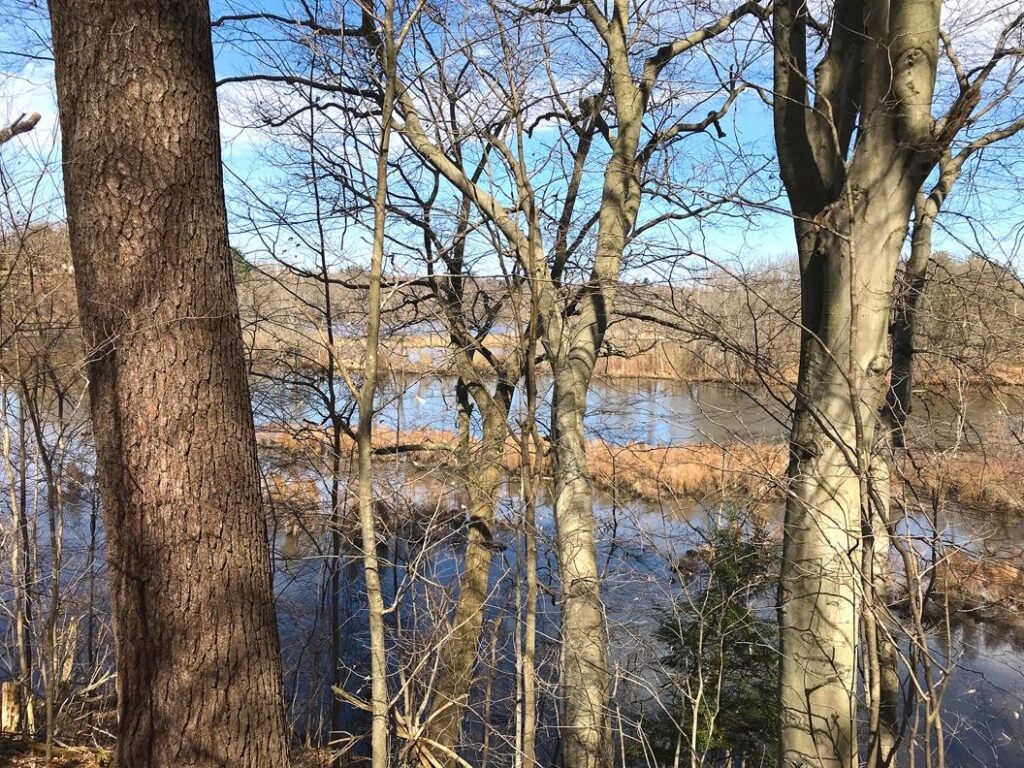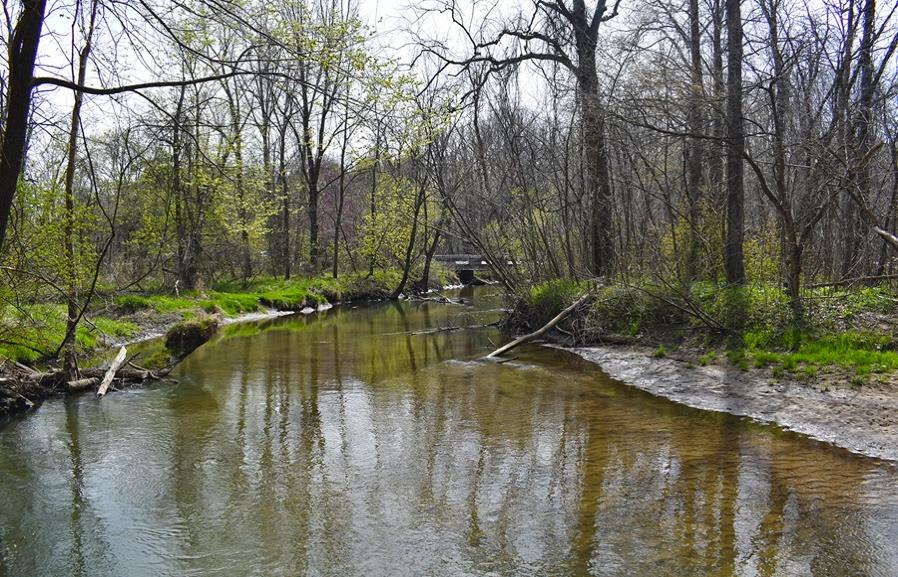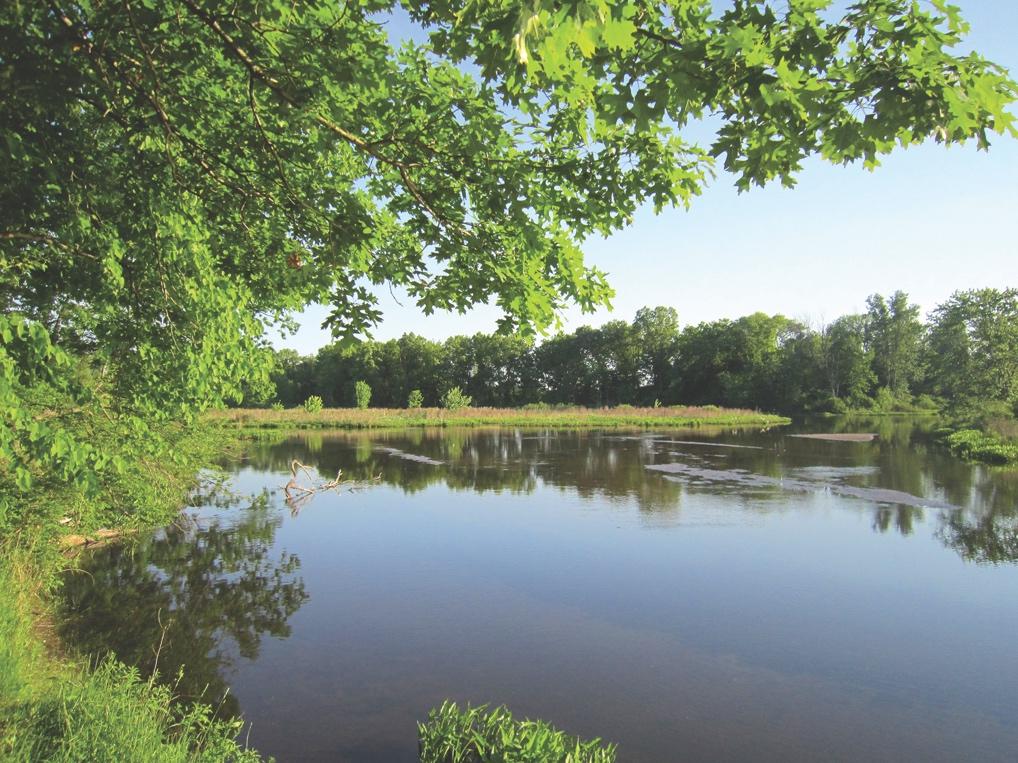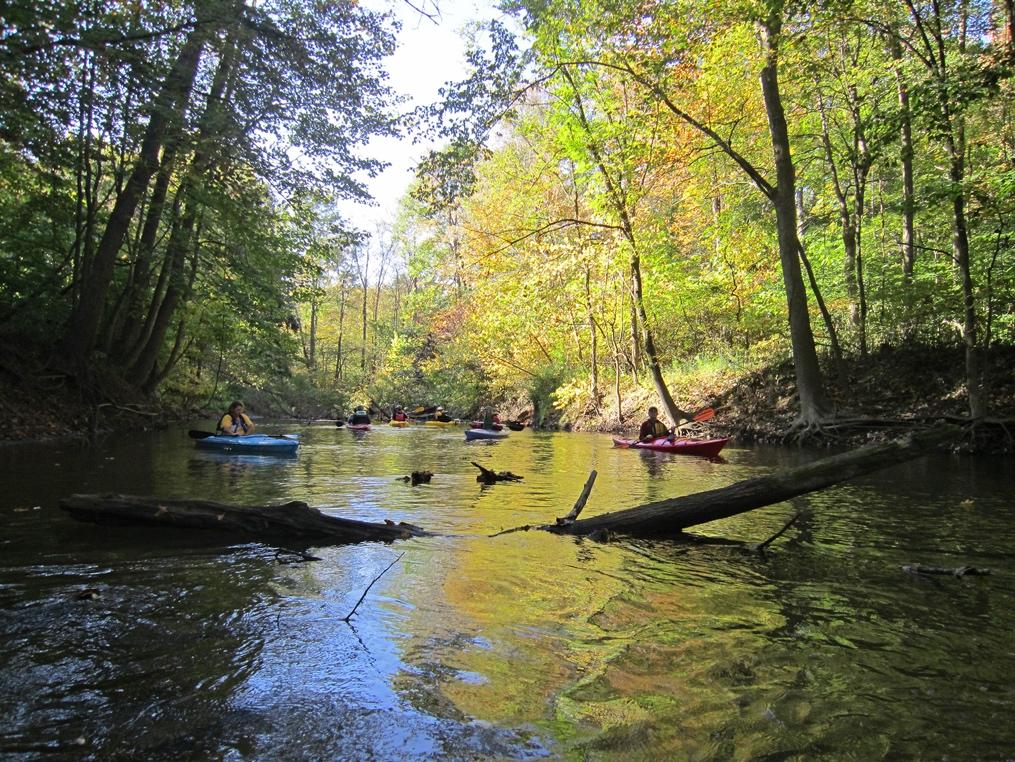by Ilse Gebhard, KAWO member
The closest thing to a “wilderness experience” in Southwest Michigan probably is canoeing some of our rivers and creeks. The floodplain forests along their banks provide valuable habitat for native fauna and flora. These streams are not as exciting as the white-water rivers of the West nor as spectacularly scenic as the Colorado River in the Grand Canyon. They are more intimate and best suited for quiet moments and detailed observation of nature.
Not that canoeing our streams can’t get the adrenaline flowing. In spring when the water is high and fast one can easily get swept sideways along a log or in summer when the water is low, precariously teetering on a submerged stump is not uncommon. One false move and over you go. And then there is the watersnake on an overhanging branch which might drop into your canoe as you fight the cobwebs and loose your hat. You wouldn’t have gotten into that tight spot had your attention not been diverted by the brilliant Prothonotary Warbler, called the Golden Swamp Warbler by some, or by the vibrantly red Cardinal Flower against the lush green of False Nettles.
The best time of year to see and hear birds along these rivers is mid-May to early July, starting at daylight. The dawn chorus can be overwhelming if you are trying to figure out which birds are singing. For my part, I just like to listen as we quietly float down the river.
Paddling noiselessly
A ghostly Great Blue Heron
Emerges from mist
If your interest is in butterflies and dragonflies pick a stretch of a small creek that is bordered by fields and marshy areas. A warm summer afternoon is best. Flowerfield Creek is such a place.
Floating down the creek
Myriad of damselflies
On gossamer wings
Want to experience what the early explorers like La Salle faced as they passed through our area? Wait for a 90 degree, 90% humidity day and paddle an upper stretch of the Rocky River. Wear long pants and a long-sleeved shirt and plan on getting dirty. Load the canoe down with drinking water and allow extra time.
Another downfall
Another muddy portage
Through waist-high nettles
Pleasant? Debatable! Memorable? Yes! Would I do it again? Maybe in a weak moment, but with more protection between me and those ferocious mosquitoes than pants and a cane canoe seat.
Canoeing in the fall, glorious colors await you. On the smaller rivers and creeks, the colors surround you like a mantle while on the lower reaches of the Kalamazoo River the vistas are broader and the colors reflect off the placid waters.
We are fortunate that some stretches of our rivers are protected from development. Large tracts of public lands on the Kalamazoo River are the Fort Custer Recreation Area and the Allegan State Game Area and Warren Woods State Park on the Galien River.
The Southwest Michigan Land Conservancy, founded in 1991 and headquartered in Kalamazoo County, one of the nine counties it serves in Southwest Michigan, has 18 public nature preserves and 36 refuge preserves. Of those, a number protect riparian habitat and some are located along “paddle-able” rivers. There are three preserves along the Kalamazoo River, two each along the Paw Paw and Portage Rivers, and one each along the Black and Galien Rivers. The four preserves listed below are open to the public every day from dawn to dusk with no admission fee. Be for-warned though that none of these preserves really have a dedicated spot to land a canoe or kayak. They are best visited on foot by parking at their designated parking areas.
Kalamazoo River: Armintrout-Milbocker Nature Preserve
Black River: Black River Preserve
Galien River: Kesling Nature Preserve
Portage River: Hidden Marsh Sanctuary
Additional protected areas are:
Michigan Nature Association’s Dowagiac Woods on the Dowagiac River,
Kalamazoo Nature Center on the Kalamazoo River
Sarett Nature Center on the Paw Paw River.




Photos: Southwest Michigan Land Conservancy
